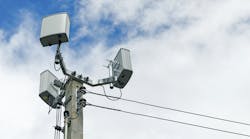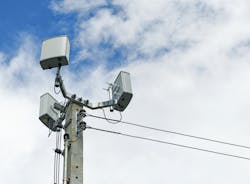Download this article in .PDF format.
The U.S., China, and South Korea are the leading countries producing 5G trials and commercial launch plans. In the U.S. alone, Accenture predicts these next-generation networks could ultimately add $500 billion to the economy.
These 5G networks will be powered by small cells—condensed base posts that are set up every few hundred feet. An area with these antenna units will deliver mobile 5G customers with reliable data services and continuous data handoff.
Small cells are critical for 5G deployment because they utilize millimeter-wave spectrum, which lacks the signal range of the lower frequencies used by LTE services. Hence, to satisfy the needs of next-gen services like smart cities, remote medicine and the Internet of Things, it is vital to ensure that they are installed in adequate density.
Their small size makes the cells stress-free to install on objects such as light poles, kiosks, billboards, and on the sides of buildings in a discreet manner. In some areas, getting the necessary zoning approval for their placement has been challenging, but progress is being made. For example, the U.S. Federal Communications Commission recently approved an order to streamline 5G infrastructure rollout.
Ingenuity of small cells
Small cells can take as little as 30 minutes to assemble, making it easy for communication service providers (CSPs) to meet increasing data traffic demand with greater speed and cost-effectiveness. The high concentration of a small cell network also permits network developers to more logically target usage hotspots based on a variety of parameters such as capacity and coverage requirements, high-value users, and customer churn propensity.
They should also allow CSPs to reach more specific and efficient use of spectrum. This type of wireless network is likely to play a critical role in offloading traffic from current network towers. For example, the short broadcast area of 5G means that similar frequencies used by one small cell to connect with customer devices could be reused in a different area to serve other customers.
Predictions for SD-WAN
SD-WAN will be central in stemming the greatest value from small cell-powered 5G networks alongside artificial intelligence and real-time analytics. An SDN/NFV-based control plane sanctions for the malleable and efficient allocation of network services to please users’ different quality-of-service demands. Also known as network slicing, small cells will be critical in making this conceivable.
The high density of small cell networks—which can call for five to 20 times more cells than LTE—will increase challenges of how they can be frequently optimized to deliver the best possible network performance. Using automation technologies like self-optimizing networks will be important, especially when mass-scale adoption of IoT vastly increases the quantity and variety of network elements.
SD-WAN solutions also make remote branch offices easier to support. When combined with 5G, end users will experience greatly enhanced performance in applications such as video-conferencing, cloud computing, and remote access.
Network operators will be able to provide and control large numbers of access points more efficiently with the virtualization of small cell networks. Dense clusters of cells in a high-traffic area could share a main controller that allows network assets to be allocated flexibly in unity with traffic patterns. As 5G continues to advance, the ability to remotely upgrade whole clusters of small cells will be valuable.
Small cells will require significant upfront investment as well as a sharp learning curve from previous generations of wireless networks. However, they will be a cornerstone of future 5G positioning and indispensable to providing fast, dependable, and efficient 5G services.

